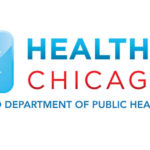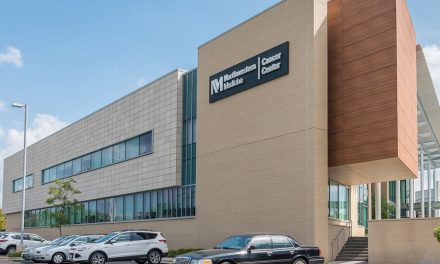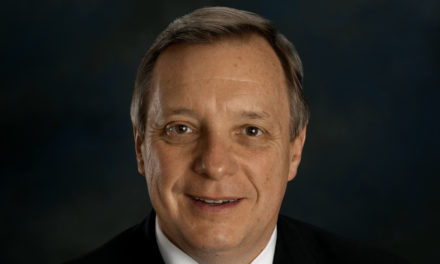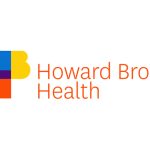
Northwestern’s Kenzie Cameron talks COVID-19 vaccine messaging
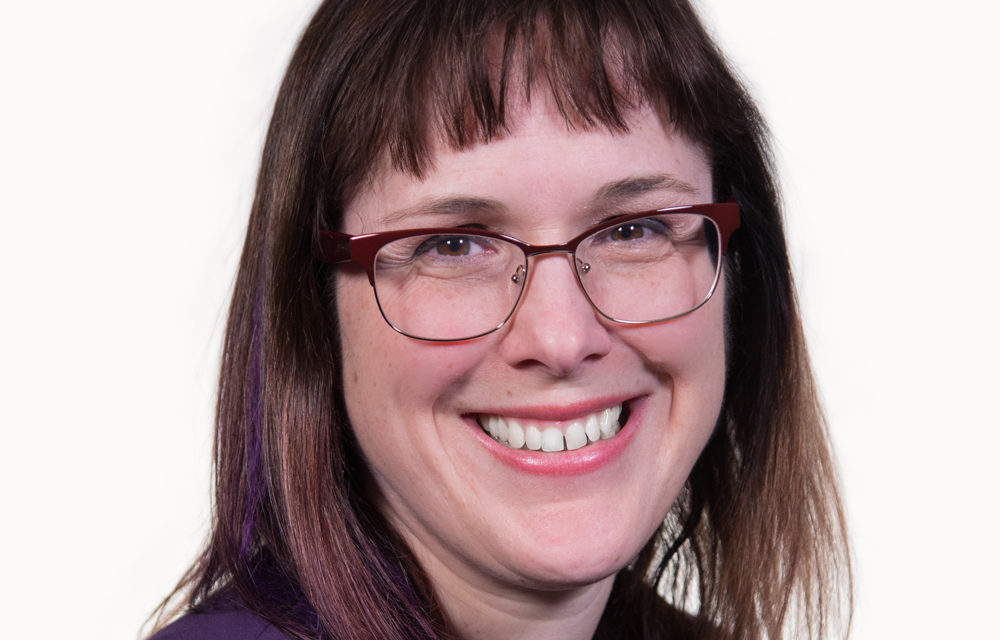
As the COVID-19 vaccine rollout continues, healthcare officials will need to focus on a variety of messages to encourage staff, community members and others to be vaccinated, said Kenzie Cameron, a research professor at Northwestern University’s Feinberg School of Medicine who specializes in health communication.
Cameron spoke with Health News Illinois about the early messaging for the COVID-19 vaccine, addressing hesitancy from healthcare workers and those in the Black and Brown communities, and what can be learned from messaging from existing vaccines.
Edited excerpts are below.
HNI: How do you think the vaccine rollout has gone so far?
KC: That’s a heavy question. And obviously, it’s been going a lot more slowly than anyone, I believe, had hoped or perhaps even planned. It’s interesting, because, depending on the seat that you’re sitting in, you can have very different perspectives. So, for example, I’m a Ph.D., not an MD, so I’m not on the front lines, so I haven’t yet gotten my vaccine, but many of my colleagues have. So when I look at it from that perspective, I am incredibly grateful that so many of my physician colleagues who are patient-facing are getting the vaccine. But that said, I also know that not as many doses as we expected or planned were made available, and that is what makes it challenging. So in terms of how it’s going, I would say I’m incredibly grateful that it has started and slightly concerned about the speed.
HNI: How do you think the messaging has been so far when it comes to encouraging people to be ready to receive the vaccine when it’s their turn?
KC: That is a fascinating question. I’m of the belief that one message or a particular suite of messages will not be sufficient for everyone over time. And I think one of the challenges that we face right now is we’re trying to message as a society how important it is for everyone to be vaccinated. And then the next part of the sentence is, ‘when vaccines become available.’ And that’s a very tricky position to be in, recognizing the vaccine is not going to be available next month for everyone, or even two months from now. So I think that messaging … it’s slightly hard to even kind of put into words. What I very much appreciated actually is more of the personal messaging that has gone on, in particular, with the healthcare providers who have been very upfront, even on social media, saying, ‘Look, I’m doing this, I’m getting this vaccine, I am thrilled, I believe in science, this is a huge day for me.’ And the reason I think that messaging is so critical is that those healthcare professionals who are receiving the vaccine, by doing this through social media, they are reaching people who know them, who trust them. That linkage, I think, is going to be incredibly strong. You hear a lot of people saying when they see messages, ‘They’re talking to people who don’t look like me, or who don’t have my background. What I see in this in this in this commercial isn’t my life.’ And so I think the more that we can kind of expand that. Yes, this is still primarily healthcare providers, but they have families and friends and they’re doing it to protect themselves, but they’re also very much doing it to protect their patients such that they will not be a vector to others. And I think we might be able to push a little bit more on that messaging.
I do think we need to see more messaging about expected side effects so that people can understand why those side effects may happen. Because again, since right now the focus is on healthcare professionals, they understand why after the second doses of vaccine, some are fatigued, they may have a fever, sore arm, some are having headaches. No one wants those side effects, but as a medical professional, there’s an understanding of, ‘OK, my body is getting ready to fight the coronavirus. These are side effects of the vaccination, because my body is thinking, ‘attack, attack, attack.’ These side effects will go away.’ I think we need to let people know that and be aware of that, because no one wants to willingly sign up for having side effects. But to understand that it’s not a negative, what it means is that your body is getting ready to fight.
HNI: So it sounds like a big thing is just being open with people about the vaccines, the side effects and what they can expect?
KC: I do think there needs to be – and I do think there has been – transparency. I don’t feel that anything has been hidden, but I do think just being very open and honest and making sure that people understand it’s very likely you will have a sore arm, and that’s OK. And it’s possible that you will have other side effects, and that is also OK. And I think if we don’t normalize that, we may have a lot of people who are incredibly concerned.
HNI: There have been some reports of healthcare workers in Chicago and other states who have been reluctant to receive the vaccine, especially those who work in the city’s south and west sides. What do you think the reason for that may be and how do you prepare that vaccination messaging for healthcare workers?
KC: If the concern is about side effects a year from now, I think we need to be open, honest and transparent. This is a new vaccine. we cannot 100 percent tell you what concerns there may be a year from now. But that’s where I would turn to the neurologists and the immunologist to maybe talk about other related vaccines and what we might expect and give us information and rationale as to why they are suggesting that. And it’s a time unlike any other because we can’t say how long the vaccine is going to work for. We don’t know yet. I’d kind of relate it to the pneumococcal vaccination. I mean, when we started giving pneumococcal vaccinations, there was one, and the recommendation was that everyone be vaccinated. But now there are two pneumococcal vaccinations because there are multiple strains, and, over time, we learned that the one vaccine wasn’t sufficient. And really for the best protection, you wanted to get two vaccines. And so, I think being able to communicate that we have decades of research into vaccines, and so we have a path, we have a template, but we might not be able to give exact answers yet. And being honest about that will be key.
The other aspect I’d like to point out, one of the concerns that I have heard, is related to the perceived speed of the vaccine. And depending on who you talk to, people feel that it was incredibly fast or not as fast as it should have been. But this is unprecedented collaboration globally that we have seen to get to where we are today. And so if there’s a concern about, ‘Well, this seemed to happen quickly,’ there was so much more sharing of information across the world because we are fighting a global enemy. We are fighting one global enemy, and so the collaboration between scientists and also between government and governmental funding going into vaccination development. All of these things wrapped together allowed an accelerated process. And then on top of that, we have been developing vaccines for decades. So even though it’s a different vaccine, it’s based upon work that has been done. It’s kind of the whole, the more we do the better we get, the more we’re able to do it faster, the more we’re able to do it better.
HNI: There’s been much discussion about encouraging vaccinations among Black and Brown communities that have a historical distrust of vaccines. What are some of the specific challenges? And what are some of the ways these concerns can be addressed?
KC: You just mentioned the distrust, and I’ve taken to calling it a rational distrust. We should all be able to understand why there is a lack of trust, and so I think we need to start there. I think it does go back to really digging deep to find out: What are the concerns? Is it distrust or is it something else? The fact is it might be both. There might be a concern that is even greater than distrust, so I think honing in on what some of those concerns are. I personally think another message that I hope we can really get out there is we recognize the devastation that COVID has had, in particular in Black and Brown communities. It is absolute that there have been disproportionate rates of illness and death. We are absolutely looking at incredible disparities. If we see disparities in who is vaccinated, that disparity is going to keep growing. And so we need to work with individuals in the community. We need to talk to people who don’t want to get the vaccine and have a discussion and say, ‘OK, that’s a great concern. How do we build the bridge so we don’t see increasing disparity?’ Because what I’m concerned about is … we see a difference in willingness to be vaccinated. If we see a similar difference in who gets the vaccine, we are then failing our underrepresented communities even more. And we risk seeing a greater inequity. I would like to see everyone be vaccinated, but I definitely want to see – I think it’s going to be important for us to say, if we believe it is so critical for some of the underserved communities to be vaccinated, maybe we need to get the vaccine to those communities faster. Obviously, there’s a lot that goes into that, but I think that needs to be something that’s on the table that we’re thinking about. If we’re saying we can identify communities that have been harder hit by the virus, that makes that community higher risk. We should be focusing efforts on the high-risk communities.
HNI: Are there specific messages that have shown to be successful in encouraging people to receive flu and other types of vaccinations that could transfer to COVID-19?
KC: I did some work a number of years ago that was looking at the idea of a presentation of facts and myths. And that a lot of times, we see these messages like, ‘Fact: The flu shot doesn’t cause the flu.’ If we stop there, that’s not good enough. We need to then give the rationale, we need to give the why behind the effect. Because if you think about if you were having a conversation with your physician, and you say to your physician, ‘I don’t want the flu shot because it’s going to give me the flu.’ And the physician says, ‘No, it’s not.’ And that’s the end of the conversation, that’s not a good interaction. You need to say, ‘No, it’s not, and this is why. Because the virus in the flu vaccine is inactivated. And so it cannot give you the flu. It has been killed before it’s been put into the vaccine.’ Now, that said, that’s not a concern that I really have heard a lot, the idea that the vaccine may give you the virus, in this case. But I think that we can take that aspect of, let’s make sure we’re not just saying, ‘Here’s information that I think you need to know’ and putting a period on the end of it. But making sure that we give that explanation, that why. We call it two-sided messages. It’s not just here’s the one side and here’s the other, but then you also have the refutation with it so that you can say here’s the whole story.
So I think that using that type of framework can be effective. I think personal narratives, personal stories are potentially going to continue to be very effective. We’re seeing that when people are posting on social media that they got their vaccine. That’s making it a person-to-person type connection. I’ve heard a number of people, whether it’s in the news or just in conversations I’ve had say, ‘I’m not for sure I really want to get the vaccine, but I’m going to get the vaccine because I think it’s important.’ And I’ve heard some colleagues who have said, ‘I am a Black woman and I am slightly hesitant to get the vaccine, but I am going to do it because I think it’s important for my community to see me getting a vaccine.’ I think particularly starting to identify what the reasons that those people who were hesitant decided to get the vaccine, what their reasons were, we can then share with others. Because in some ways, it’s probably going to be a lot stronger if you have a message from someone who says, ‘I had some concerns, but I decided to get the vaccine. And here are the reasons why I got it two months ago. I did have a sore arm and a slight fever. I am incredibly glad and grateful that I got the vaccine.’ And that type of message recognizing that even for people who are being vaccinated, some of them still have a little hesitancy, might be stronger than just someone saying, ‘Well, of course, I’d get the vaccine, wouldn’t anyone get the vaccine?’
HNI: What more do you think policymakers can do to help, in terms of the vaccine rollout and the messaging?
KC: My gut tells me that where the policymakers can be most effective is in figuring out how do we get sufficient quantities of vaccine to underserved areas where we see the communities being greatest hit by a virus. I think that is something that falls very much in what policymakers need to be considering. And then kind of hand-in-hand with that, who should be partnering within those communities so that people feel comfortable, safe and willing to get the vaccine. When we’re talking about messages, a big thing is we can’t just be creating messages in a vacuum. I mean, we never should be, sometimes I think that just happens. But we really need to reach out and make sure that we’re addressing the concerns. I’ve focused a lot today in this conversation about having not just the right message, but multiple people and the person that you’re more likely to trust. There can be another dimension too that I’m not mentioning. I would want to be talking to people who are unsure and saying, ‘OK, why are you unsure and what would make you feel better?’ And really doing the brainstorming, and I think to do that ahead of the vaccine day in a particular community. It’s not going to be enough to just show up and say we have vaccines.



